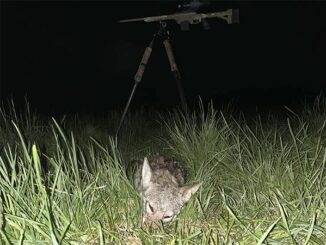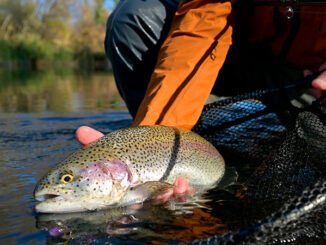https://www.youtube.com/watch?v=am_qxun6CSM
Part winter, part spring, the third month offers anglers interesting opportunities in mountain streams
March can be a fickle month. One day it’s typical spring weather: warm and sunny. The next day, it’s typical winter weather: cold and dreary. It just can’t seem to make up its mind on whether to be spring or winter.
Fickleness aside, beginning around the middle of March and continuing through May, mountain streams start warming up. Brown, rainbow, and brook trout become active and hungry. And anglers enjoy some of the best trout fishing of the year.
Fisheries biologists with the Great Smoky Mountains National Park, the N.C. Wildlife Resources and the S.C. Department of Natural Resources concur that mountain trout streams are in great condition, most with normal or full flows. We can offer thanks to the frequent winter and early spring precipitation for that.
Jack Tamborski, a guide for Tuckasegee Fly Shop in Bryson City, N.C., said he’s caught some of his biggest trout in March fishing on Deep Creek in the Great Smoky Mountains National Park. During a trip last March, Tamborski was standing on a bridge that leads to the campground in the lower section of Deep Creek. He saw a flash in a large pool below the bridge. So he dropped a mop fly into the pool, and to his surprise, caught a beautiful brown trout.
Technique
Marc Hipp of Brookings Anglers in Cashiers, N.C., a veteran guide, said when the water is cold, trout are less likely to be concentrated in one area. So it’s important to cover a lot of water. Trout are most active when stream temperatures are between 52 and 60 degrees. But even when they are lower, fish have to eat. Sometimes, you just have to spoon-feed them.
When using nymphs, Hipp said it’s important to add enough weight to get a fly down and bump it along the bottom where the trout are more likely to hold. Also, he said, use small, fluorocarbon tippets, such as a 4X or 6X.
Hipp said the best time to fish is late morning to late afternoon, after the sun has had an opportunity to warm the water.
And, he said, don’t be a fair-weather fisher. “You can catch trout even when it’s overcast and drizzling rain.”
Flies
A variety of flies can be used during March: dries, nymphs and streamers. Best bets are Early Winter Stone, Black Caddis, Blue-Winged Olive, Griffith’s Gnat, Parachute Adams, Copper John, Wooly Bugger variations, Squirmy Wormy, Pheasant Tail (regular and soft hackle), Hare’s Ear and Sculpzilla,
As for size, the best rule is to use larger patterns such as Nos. 12s and 14s in early spring. Then switch to smaller patterns as the weather gets warmer.
Streamers such as Woolly Buggers and sculpin patterns often are thought of as large water flies. But Hipp said streamers can be just as effective in small streams.
Spawning rainbows
Depending on the weather, rainbow trout spawn between the last of February and first of April. When fishing for spawning rainbows, use a long leader (at least 12 feet). Cast to riffles above a pool and allow the fly to float into the pool. Let the fly drift until it begins pulling in the current, because rainbows often will strike near or at the end of a drift.
Egg patterns are especially effective for catching post-spawn rainbows. For a trout, food is food, even if it is their offspring.
Early spring is an ideal time to get out on a stream. The fish are hungry and active, and only a few die-hard fishers will be on the stream.
Closed waters
In North Carolina, hatchery-supported waters will be closed to fishing during March, reopening at 7 a.m. on April 6. Cherokee Enterprise Waters also will be closed most of March, opening the last Saturday of the month. Their catch-and-release waters are open year-round, including March, however.
![]() Check out the attached video from Wild Fly Productions to get a taste of spring trout fishing in the Carolina mountains.
Check out the attached video from Wild Fly Productions to get a taste of spring trout fishing in the Carolina mountains.




